
Recipe: Upside-down treat is baked in a skillet
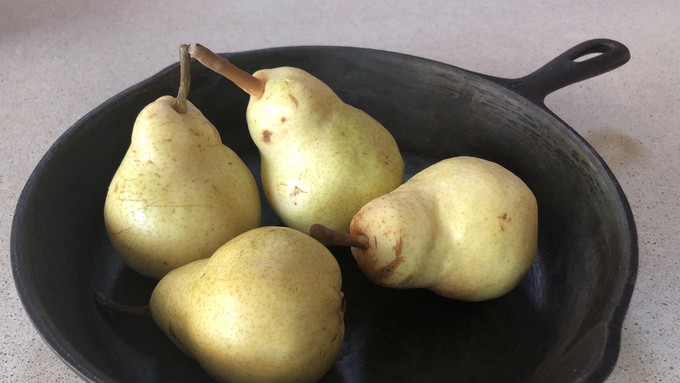
Fresh Bartlett pears are the stars of a skillet-baked upside-down cake. Other pans can be used. Kathy Morrison
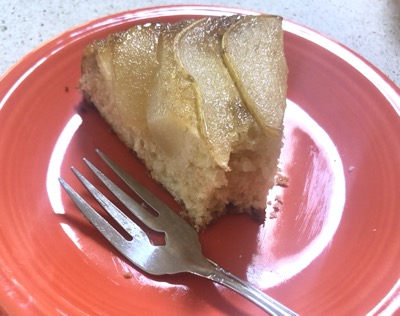
Apples and pumpkins rightfully are hailed as the flavors of autumn, but for me fall is all about pears. They work in so many types of recipes, savory as well as sweet. (Most indulgent such dish I’ve ever had: Dungeness crab and pears with fresh pasta in a white wine sauce. OMG).
This upside-down cake is my fall variation of a popular New York Times recipe by Melissa Clark. I recommend ripe but still-firm pears. If you can find Bartletts that are at that stage, go for it. Bartletts are perfect for about 5 minutes, so move fast. Bosc or Comice pears are other good choices, but they must be peeled; the peeling of Bartletts is optional.
Choose the spice that you prefer. I like cardamom with pears, but cinnamon or allspice also would be excellent.
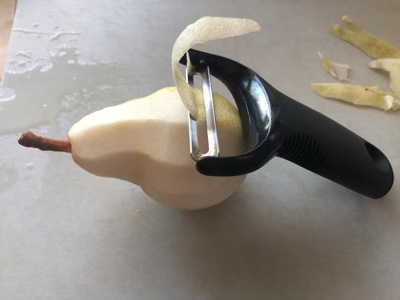
If you don’t have a 10-inch cast-iron skillet, bake the cake in the heaviest baking dish or pan you have of comparable size. Caramelize the butter, brown sugar, lemon juice and salt in a small saucepan in place of the skillet, then transfer it to the baking pan before combining with the fruit.
Upside-down pear skillet cake
Serves 6-8
Ingredients:
Fruit topping:
4 tablespoons unsalted butter
⅓ cup brown sugar
1-½ teaspoons fresh lemon juice (be sure to zest the lemon first; see below)
¼ teaspoon sea salt
3 or 4 ripe but firm pears, peeled if desired, cored and sliced thin

Cake:
½ cup unsalted butter, melted and cooled
¾ cup granulated sugar
1 tablespoon vanilla extract
1 teaspoon finely grated lemon zest
2 large eggs, room temperature
½ cup plain whole-milk yogurt or sour cream
1-½ teaspoons baking powder
¾ teaspoon sea salt
¼ to ½ teaspoon ground cardamom or other favorite spice
¼ teaspoon baking soda
1-½ cups unbleached all-purpose flour
Instructions:
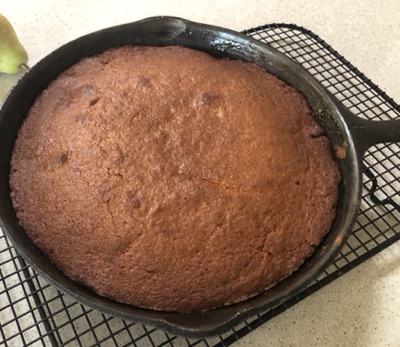
Heat oven to 350 degrees.
To make the topping, melt the butter over medium heat in an oven-safe 10-inch skillet, such as a cast-iron skillet. Add the brown sugar, lemon juice and salt, and whisk or stir until the brown sugar melts, 1 minute or so.
While whisking constantly, allow the sugar mixture to cook until it begins to smell like caramel and darkens slightly, about 1 minutes longer. Be sure to stay at the stove — sugar easily burns. The mixture may clump or separate but that’s normal.
Add the pear slices and gently stir to coat them with the caramel. Remove the pan from the heat and arrange the fruit in the desired pattern in a single layer on the bottom of the skillet. Any sugar clumps will dissolve during baking.
To make the cake batter: In a large bowl, whisk together the melted butter, granulated sugar, vanilla and lemon zest until combined. Add the eggs one at a time, then stir in the yogurt or sour cream. One at a time, add the baking powder, the salt, the cardamom or chosen spice and the baking soda, stirring well after each ingredient.
Finally, gently fold in the flour. Don’t overmix: lumps are OK. Pour the batter over the fruit in the skillet and gently spread it evenly using a spatula.
Bake in the middle of the oven until the surface is deeply brown and the fruit is lightly bubbling along the edges, about 40-45 minutes, rotating the pan after about 20 minutes. Use the toothpick test to determine doneness; with all the fruit at the bottom, this cake needs to be completely done in the middle.
Remove the skillet to a cooling rack and run a knife around the edge to loosen the cake. (This step may not be necessary, with all the butter in the batter, but it’s a good idea to do it anyway.)
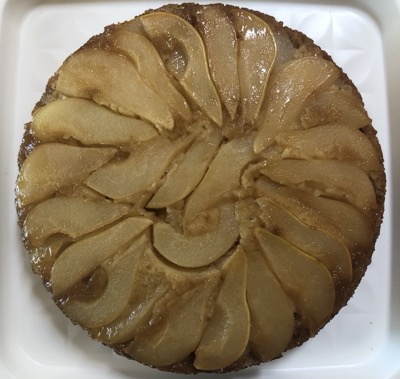
Allow the cake to sit in the pan for 10-15 minutes to cool slightly; too much more cooling time will make it difficult to flip the cake properly.
Cover the pan with your chosen serving plate or platter and carefully invert the cake onto it. If some of the fruit sticks to the bottom of the skillet, gently remove it with a spatula and place back on the cake.
Let cake cool at least 30 minutes before serving. It’s best enjoyed on the day it’s baked, but leftovers can be reheated.
Comments
0 comments have been posted.Sacramento Digs Gardening to your inbox.
Sites We Like
Garden Checklist for week of May 12
Get your gardening chores and irrigation done early in the day before temperatures rise.
* Plant, plant, plant! It’s prime planting season in the Sacramento area. Time to set out those tomato transplants along with peppers and eggplants. Pinch off any flowers on new transplants to make them concentrate on establishing roots instead of setting premature fruit.
* Direct-seed melons, cucumbers, summer squash, corn, radishes, pumpkins and annual herbs such as basil.
* Harvest cabbage, lettuce, peas and green onions. This heat will cause leafy greens and onions to flower; pick them before they bolt.
* In the flower garden, direct-seed sunflowers, cosmos, salvia, zinnias, marigolds, celosia and asters.
* Plant dahlia tubers. Other perennials to set out include verbena, coreopsis, coneflower and astilbe.
* Transplant petunias, marigolds and perennial flowers such as astilbe, columbine, coneflowers, coreopsis, dahlias, rudbeckia and verbena.
* Keep an eye out for slugs, snails, earwigs and aphids that want to dine on tender new growth.
* Feed summer bloomers with a balanced fertilizer.
* For continued bloom, cut off spent flowers on roses as well as other flowering plants.
* Got fruit trees? If you haven't already done so, thin orchard fruit such as apples, peaches, pears, pluots and plums before they grow too heavy, breaking branches or even splitting the tree. Leave the largest fruit on the branch, culling the smaller ones, and allow for 5 to 6 inches (or a hand's worth) between each fruit.
* Thin grape bunches, again leaving about 6 inches between them. For the remaining bunches, prune off the "tail" end, about the bottom third of the bunch, so that the plant's energy is concentrated in the fruit closest to the branch.
* As spring-flowering shrubs finish blooming, give them a little pruning to shape them, removing old and dead wood. Lightly trim azaleas, fuchsias and marguerites for bushier plants.
* Add mulch to the garden to help keep that precious water from evaporating. Mulch also cuts down on weeds. But don’t let it mound around the stems or trunks of trees or shrubs. Leave about a 6-inch to 1-foot circle to avoid crown rot or other problems.